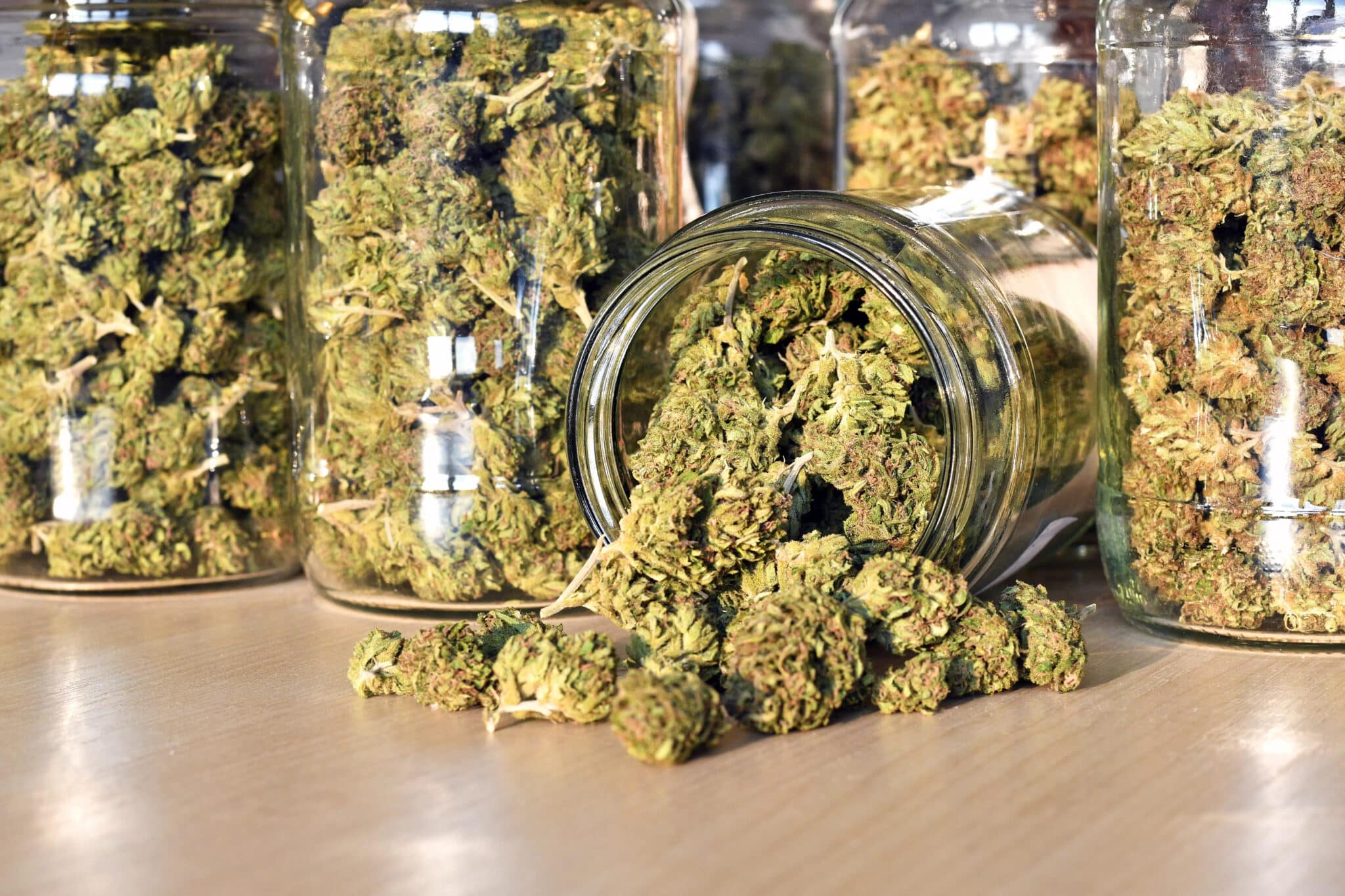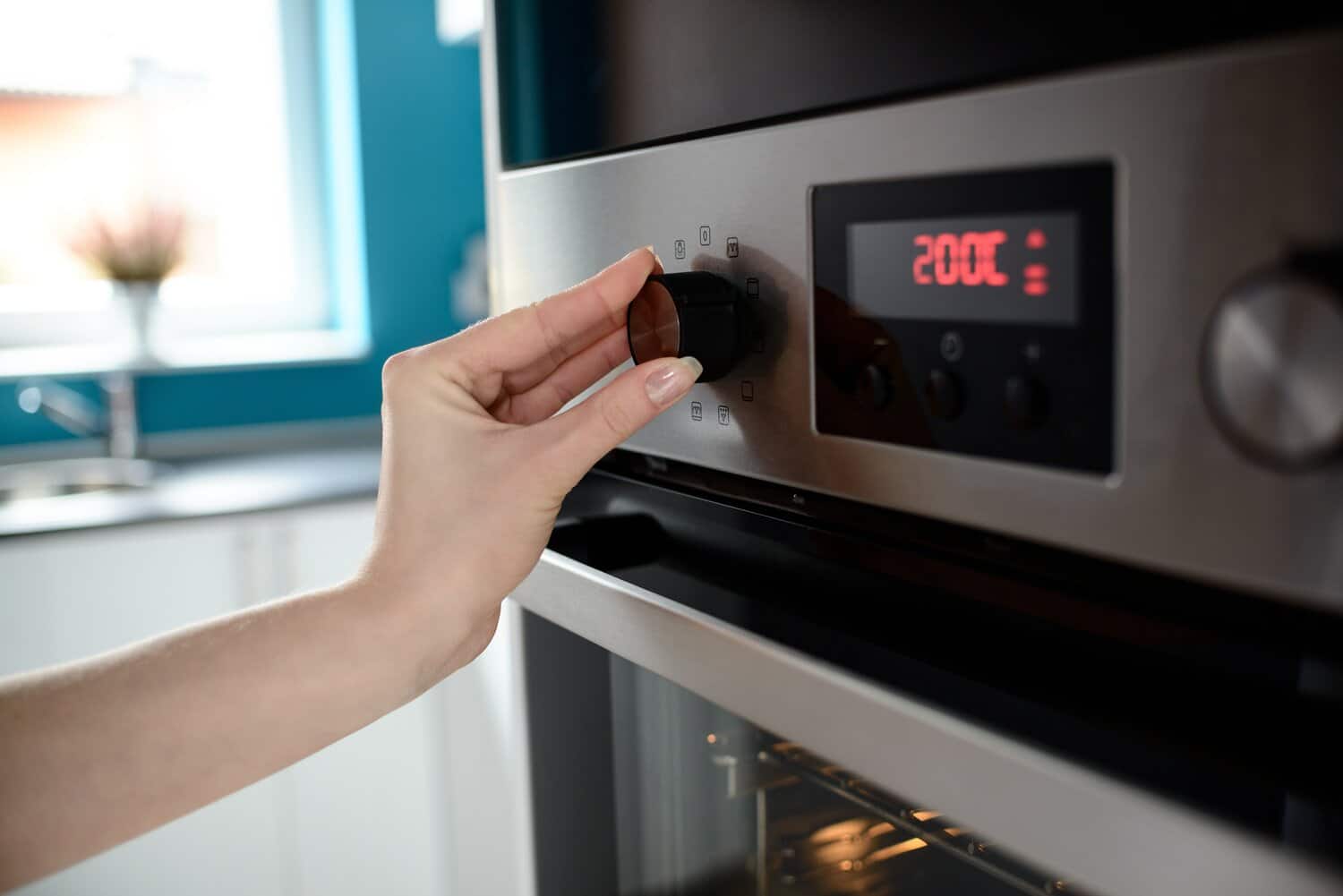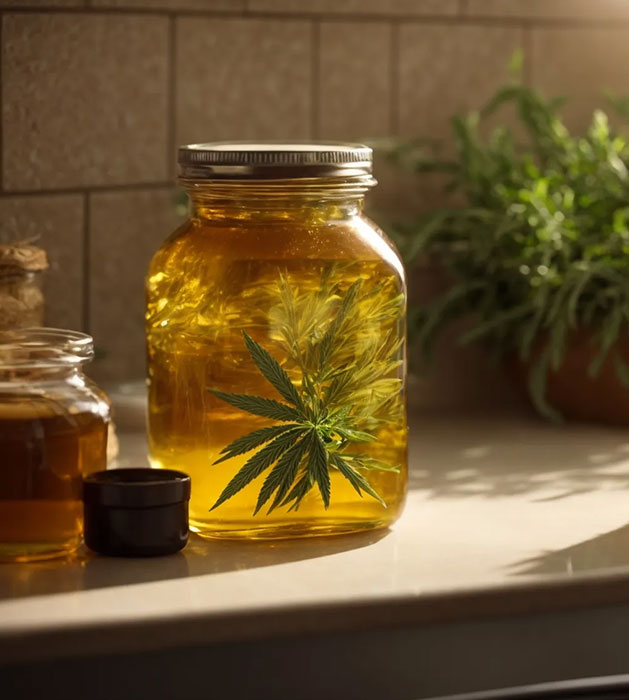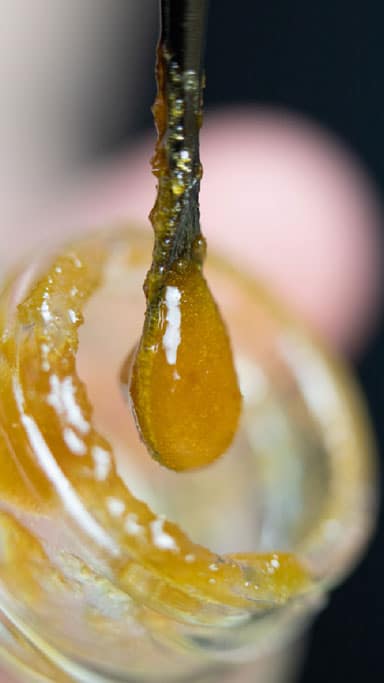

Journal of Chromatography 520 (1990)
Decarboxylation is the critical process by which the naturally occurring compounds in the cannabis plant are activated to deliver therapeutic and psychoactive effects. Whether one is infusing oil for edibles or enhancing the potency of their herbal collection, understanding the interplay of heat, time, and the preservation of delicate terpenes is essential. The art of decarbing transforms raw cannabis into a powerful ingredient for cooking, unlocking the full potential of its properties. In this article, readers will discover a methodical approach to perfecting this pivotal step, ensuring maximum efficacy in their cannabis-infused creations.
Before embarking on the process of decarboxylation, it is vital to comprehend the transformation that heat incites in cannabis to unlock its full potential. Decarboxylation is the chemical reaction responsible for converting non-psychoactive cannabinoids into their active counterparts, thereby optimizing the potency of the cannabinoid profile within the plant material. Key to this method is controlled application of heat, often using an oven. Equally essential is proper equipment; a standard kitchen oven paired with a sheet pan can serve as a rudimentary yet effective setup. To infuse decarbed cannabis into edibles, one must also consider a medium, like butter, for efficient cannabinoid transfer. Grasping these fundamental aspects sets the stage for a successful decarbing venture, ensuring the intended effects are preserved and enhanced.

Decarboxylation strategically harnesses heat to transform tetrahydrocannabinolic acid (THCA) into tetrahydrocannabinol (THC), the substance acclaimed for its psychoactive attributes. This conversion occurs when the dried plant material is exposed to a specific temperature threshold, causing a chemical reaction that releases a carboxyl group in the form of carbon dioxide and water vapor.
The technique typically involves evenly spreading cannabis on a sheet pan lined with parchment paper to prevent sticking and ensure uniform heat distribution during the baking process. Thorough and practiced application of this method is essential to achieving the desired concentration of activated cannabinoids without compromising the integrity of the compounds.
Preparing to harness the full spectrum of cannabis's attributes, including the entourage effect, requires precise tools. A quintessential component is paper, specifically parchment paper, which acts as a non-stick barrier between the plant material and the pan, facilitating even heat distribution while mitigating the risk of loss due to sticking.
The efficiency of decarboxylation hinges on the expulsion of the carboxyl group as carbon dioxide and water vapor, a reaction initiated by the breakdown of acidic cannabinoids under controlled temperatures. To capture these vapors without introducing contaminants like ethanol, a well-calibrated oven is crucial, alongside an oven-safe container that is both secure and conducive to consistent heating.

Success in decarboxylation begins with the selection of high-quality cannabis. Identifying premium flowers involves examining their appearance, scent, and texture to ensure they contain the desired chemical compounds. While it's tempting to consider quick fixes like using a microwave, such methods can unevenly activate cannabinoids and lead to a loss of precious terpenes, altering both flavor and efficacy. Furthermore, choosing between Sativa, Indica, or a Hybrid variety depends on the intended experience, as each strain has a unique profile affecting the outcome of the chemical reaction during decarboxylation. A precise thermometer is an indispensable tool to monitor and maintain the ideal temperature, thus safeguarding against the degradation of essential cannabinoids and preserving the weed’s potent odor.
One's choice in herb significantly determines the quality of the final infusion. Discerning cultivators often assess the integrity of buds by scrutinizing the trichome density and aroma, which should confirm the cannabis's maturity and potential for a potent decarboxylated product.
Techniques such as sous vide, tincture preparation, and the use of a slow cooker rely on premium starting materials to yield optimal results. Therefore, it's incumbent upon the user to select cannabis that manifests a robust and desirable cannabinoid profile, serving as the foundation for a successful extraction and a powerful culinary or therapeutic outcome.
When selecting cannabis for decarboxylation, one must carefully consider the strain as it influences the complexity of the carbon molecules within the cannabinoids, which play a key role in the ultimate potency of the deactivated product. Sativa strains tend to provide more cerebral effects, Indica strains are noted for their sedative properties, and Hybrids offer a balance that can be tailored to individual preferences or specific therapeutic outcomes.
During decarboxylation, attention to the details spelled out in the terms of service for the mason jar or other decarbing container is paramount. This ensures preservation of the strain's unique properties and prevents any loss of molecular integrity that could diminish the desired effect, whether the strain is a pure Sativa, a soothing Indica, or a crafted Hybrid.
The transformative journey from raw cannabis to a substance ready to engage with the endocannabinoid system requires meticulous steps, ensuring that each cannabinol-rich bud releases its full potential. The process begins with preheating the oven—a precise temperature must be met to avoid incinerating delicate compounds. Preparing the cannabis follows; handling with care to retain every bit of flavor that will later influence taste. The actual baking phase is where the alchemy happens, prompting a careful shift in the chemical constituency of the plant. Lastly, the cooling down process is not to be understated; it allows the activated substances to stabilize, preserving the potency and the integrity of the decarbed cannabis. These steps, underpinned by reliable information and executed with precision, are the critical phases that bring forth the desired transformation in the oven's temperate embrace.

The initial paramount action in the decarboxylation procedure mandates the adept calibration of the oven's temperature. Precise preheating is fundamental to thwarting the degradation of cannabinoids, which can result not only in decreased efficacy but also in the potential development of disease-aggravating byproducts or the proliferation of harmful mold spores within the plant material.
Employing a glass thermometer for accuracy ensures the cannabis is subjected to a uniform temperature, crucial for alleviating the risk of burning or under-processing. Such meticulous management of heat underpins the success of the decarboxylation process, particularly for individuals seeking relief from pain and relying on the sanctity of the process as outlined in an FAQ regarding the preservation of cannabis's therapeutic properties.

Preparation is pivotal when it comes to decarbing cannabis in order to preserve its potent qualities. Begin by carefully breaking the buds into smaller pieces, which will ensure a more even exposure to heat during the process. Spread these pieces on parchment-lined sheet pans, avoiding overcrowding to prevent steam from creating moisture, which could result in a suboptimal outcome and an unwanted infusion of smoke flavor into your kitchen and final product.
For those particularly concerned about preserving the health benefits and flavors of their cannabis, consider using an oven bag during decarboxylation. The bag acts as a barrier, minimizing the escape of precious terpenes and cannabinoids into the oven atmosphere and reducing the cannabis aroma that tends to permeate the kitchen space. This tactic enhances the efficiency of the process, locking in the very essence and therapeutic potential of the cannabis.

Once the cannabis is placed within the oven, it is vital to bake at the right temperature and duration recommended by to avoid converting beneficial cannabinoids into less desirable compounds. The introduction of heat should be gradual and even, preventing the evaporation of alcohol from any tinctures or the unnecessary drying out of the plant material, which can introduce unwanted moisture content when combined later with substances like coconut oil.
Diligence during the baking phase ensures the retention of the weed's moisture levels and the integrity of its cannabinoids. By maintaining optimal conditions within the oven, the desirable attributes of coconut oil can be infused effectively without degrading or the potential loss of any therapeutic properties that can occur with excessive heating or prolonged exposure.

After successful decarboxylation, cannabidiolic acid has been transformed and the once-humdrum plant material now teems with activated potential; this stage calls for a measured pause. Rapid cooling might tempt, yet a gradual return to room temperature is optimal, preventing any abrupt exposure to oxygen which may degrade the delicate chemical structure birthed in the oven's heat.
Transferring the newly baked cannabis to a cool environment, such as a refrigerator, can aid in this transition, further stabilizing the cannabinoids. Taking care not to disturb the material with a spoon or similar utensil minimizes physical contact with the air, thereby sustaining the full bounty of the plant's transformed compounds – the true essence of the cookie that awaits consumption or infusion.

Approaching the decarboxylation process, one must not overlook the importance of evenly grinding the cannabis. Achieving a consistent texture is critical for promoting uniform heat exposure during decarbing, which in turn, maximizes the efficiency of cannabinoid activation. This careful preparation serves to reduce anxiety concerning potency and enhances the overall experience. Adhering to best practices for grinding cannabis is essential, not only to prevent the loss of valuable cannabinoids through evaporation but also to ensure every surface area of the plant material is thoroughly decarbed. Curious individuals seeking further guidance in this regard are encouraged to provide an email address to certified experts, who can offer tailored advice in navigating this delicate stage of preparation.

An even grind of cannabis is not simply a matter of aesthetics or convenience; it lies at the heart of the chemistry involved in decarboxylation. When each particle is of a similar size, it ensures consistent heat exposure, which is critical for achieving uniform activation of cannabinoids. This uniformity is pivotal whether a consumer aims to smoke, vaporize, drink, or include decarbed cannabis in their culinary creations.
Moreover, the intricacies of decarbing weed demand keen attention to the herb's interaction with different mediums, be it water for a drink, fat for an infusion, or direct heat. Boiling down the process to its core, the effectiveness of decarboxylation rests on the uniformity of the grind, which dictates how effectively cannabinoids are released and absorbed by the consumer, guaranteeing a product with a reliable potency and quality.
To sustain the quality of their product, individuals should seek guidance from a physician familiar with cannabis use, particularly regarding the best method for grinding. It is essential to account for factors like humidity which can affect the consistency of the grind, ultimately influencing the decarboxylation process. Professional opinion aids in reinforcing the integrity of the methodology, thereby preventing the loss of vital cannabinoids.
In the realm of cannabis processing, discerning users often gravitate towards brands that not only excel in advertising their products but also embody excellence in execution. A wooden spoon may seem like an unconventional tool in the grinding process, yet, it serves as an effective instrument for breaking up larger buds gently, ensuring an even consistency without applying excessive force that might degrade the plant's natural compounds.

Exploring alternative methods to oven decarboxylation allows for greater flexibility and precision in activating cannabis. The Mason jar method, for instance, is renowned for its ability to decarb the plant material without permeating the surrounding environment with its distinctive aroma. By sealing cannabis in a silicone-lined Mason jar and heating it to a specific degree, the process not only preserves the small nuances of flavor but also offers a cleaner approach to decarbing. Decarbing with a sous vide, on the other hand, immerses a sealed container in water heated to a precise temperature, ensuring consistent heat without risking combustion. This technique highlights the importance of accurate temperature control in the preservation of cannabis properties, which is paramount for an optimal decarboxylation outcome.
If you are wondering about preserving thc integrity while decarbing and avoiding the tell-tale scent, consider the Mason jar method. This technique fortifies the quality of your buds through a water bath, which meticulously ensures that temperature is regulated, effectively harnessing the science of heat to activate thc without any aromatic evidence.
The Mason jar method provides a discreet decarboxylation option, whereby cannabis is sealed within a heat-resistant jar and submerged in a water bath. Maintaining a steady temperature throughout the process is crucial for the conversion of cannabinoids, and this approach employs the science of sous vide to safeguard against thc degradation and assure the production of a high-quality decarboxylated weed.

Utilizing a sous vide for decarboxylation is an advanced technique that circumvents the harsh environment of an oven, which can sometimes degrade the green pigmentation of chlorophyll, leading to a less palatable taste. By maintaining a precise and consistent water temperature, the sous vide method gently coaxes the cannabis to its activated state while preserving its natural flavors.
The absence of direct heat in sous vide decarboxylation not only ensures the preservation of the delicate chlorophyll structure but also minimizes the potential for burning or overheating. This approach guarantees that the integrity of the cannabinoids remains intact, providing a more refined and smooth end product for consumption.
Achieving precise control over temperature during decarboxylation is paramount to ensuring the optimal activation of cannabinoids. Slight deviations in heat can lead to significant variance in potency and chemical composition, making it critical for enthusiasts and medicinal users alike to understand and apply the correct thermal parameters. The forthcoming discussion will shed light on the pivotal role temperature plays in the process and provide an insightful decarboxylation temperature chart, designed as a guide to assist in calibrating the heat setting to the appropriate level.
Temperature is the cornerstone of the decarboxylation process, as it dictates the rate and success with which the inactive cannabinoids are converted into their active forms. A precise temperature ensures that the delicate balance between activation and degradation of THC and other cannabinoids is maintained, resulting in a final product with the intended potency and therapeutic benefit.
Erratic temperatures can lead to the volatilization of terpenes and the destruction of other valuable plant compounds, undermining the quality of the final extract. Therefore, maintaining an even, controlled heat not only serves to protect the integrity of the cannabis but also maximizes the extraction of its beneficial components, crucial for both recreational and medical applications.

A decarboxylation temperature chart serves as an indispensable reference that delineates the precise heat settings necessary to facilitate the conversion of cannabinoids without causing deterioration. The chart provides specific temperatures that ensure the activation of THC, CBD, and other cannabinoids reach their peak without surpassing the threshold that leads to the loss of these critical compounds.
Reliance on a temperature chart underpins the effectiveness of the decarboxylation process, with the culmination being a robust, evenly activated product. These guidelines are especially pivotal in maintaining the consistency of the decarbed cannabis' potency, thereby reassuring users of its reliability for therapeutic or recreational use.
While decarboxylating cannabis at home, adhering to a meticulous set of steps ensures the potency and effectiveness of the final product. Missteps during this transformative process, however, can lead to substandard results. Common pitfalls include not grinding the weed evenly, which can cause irregular heating and result in inconsistent activation of cannabinoids. Overheating your cannabis is another error to vigilantly avoid; it can compromise the integrity of THC and other compounds, transforming them into less beneficial or inactive substances. Furthermore, impatience can be detrimental: rushing the process without honoring the necessary waiting period after decarbing may prevent compounds from reaching their full potential. Addressing these challenges is essential for the preservation of the cannabis's potency and for maintaining the nuanced profile of the decarboxylated material.
Uneven grinding can compromise the uniformity of heat exposure during decarboxylation, leading to partial activation of the cannabinoids. Such inconsistency often results in a product where only some portions achieve the desired potency while others remain underdeveloped, thereby reducing the overall quality and effectiveness of the decarbed weed.
Achieving a fine and uniform grind is instrumental in facilitating an even decarboxylation process, ensuring that each particle of cannabis is equally activated. Attention to grinding detail reflects in the potency and homogeneity of the final product, emphasizing the importance of meticulous preparation prior to introducing heat.
Applying excessive temperatures during the decarboxylation process can detrimentally alter the chemical composition of cannabis. This heat mismanagement risks not just a reduction in the therapeutic efficacy due to the degradation of cannabinoids but also the potential creation of harmful combustion byproducts.
Conscientious monitoring of the decarbing environment is essential to prevent thermal overexposure, which can convert THC into CBN, resulting in a less psychoactive and more sedative product. Practitioners should strive for an environment conducive to preserving the delicate constituents of the cannabis plant.
Patience plays an essential part in the decarboxylation process; rushing through or abbreviating the cooling phase can have adverse effects on the conversion of cannabinoids. A hasty transition from the heated environment of the oven to room temperature may result in an unstable product, hindering the attainment of its full therapeutic potential.
Allowing the decarboxylated cannabis to cool gradually is critical for the stabilization of the chemical transformations that have occurred. Neglecting this period can cause the volatile compounds to degrade prematurely, undermining the efficacy of the decarboxylated weed in its final applications.
Once the subtle art of decarboxylation has been perfected, the ensuing act of infusion beckons—the process where decarbed cannabis imparts its activated compounds to a chosen medium. Butter and oils unfurl as prime canvases for this process, transforming into versatile ingredients that reside at the heart of homemade edibles. Mastery over these infusions paves the way to a myriad of culinary ventures, inviting artisans and enthusiasts to transform ordinary recipes into extraordinary experiences enriched with the benefits of cannabis.
Infusion stands as a pivotal next step following the meticulous process of decarboxylation. By gently simmering decarbed cannabis with butter or oil, the fat in these mediums binds with the cannabinoids, creating a potent and versatile concoction perfect for culinary exploration.
With a carefully controlled heat source, this union of decarbed cannabis with fats facilitates a comprehensive transfer of active compounds. This process is critical, ensuring that the full spectrum of the plant's properties seamlessly integrates into the infusion, ready to enhance any edible delight.


Embarking on culinary innovations, artisans of home edibles recognize the versatility that decarbed weed brings to the kitchen. Incorporating this ingredient into recipes transforms traditional treats into gourmet concoctions infused with the benefits and flavors of activated cannabis, offering a personalized dining experience.
Chefs and homemakers alike can infuse decarbed cannabis into a variety of carriers, including oils and butters, which can then serve as the foundation for a myriad of savory and sweet dishes. From classic brownies to sophisticated sauces, the creation of home edibles invites a creative fusion between cooking and cannabis culture, endowing every meal with a unique touch.
Successful decarboxylation results in a crop of cannabis primed for longevity, but improper storage can rapidly degrade the quality and diminish potency. Selecting the right containers for storage is crucial; options that provide an airtight seal protect against the omnipresent threats of moisture and air, which can swiftly lead to the deterioration of the cannabinoids. Equally, the preservation of decarbed weed demands attention to environmental factors—the ideal conditions encompass a cool, dark location that shields the herb from the destructive forces of light and fluctuating temperatures. Mastering these storage techniques ensures that the full strength of the decarbed cannabis endures, ready for when the moment calls.
For optimal preservation of decarbed weed, glass jars with airtight seals emerge as the leading choice for storage. The inert nature of glass ensures that no external odors or chemicals interact with the delicately balanced cannabinoids, thus maintaining the purity and potency of the cannabis.
Specialized vacuum seal bags designed for food storage also represent an effective solution for extending the shelf life of decarbed cannabis. These bags, coupled with a vacuum sealer, eliminate excess air, significantly reducing the exposure to oxygen, which can degrade the quality of the cannabinoids over time.

The effectiveness of decarbed weed is inherently linked to the environmental conditions under which it is stored; ideal preservation requires a cold, stable climate, free from the damaging oscillations of temperature that catalyze cannabinoid decay. Minimizing exposure to light further safeguards the compounds, reducing the risk of decomposition and preserving the cannabis's efficacy over time.
Consumers should house their decarbed products in environments bereft of humidity to prevent the proliferation of mold and mildew, which can render the product unusable. Properly managed storage conditions extend the usefulness of decarbed cannabis, ensuring that its full medicinal and recreational prowess is available when desired.
Mastering the finesse of decarboxylating cannabis goes beyond following a standard routine; tailoring the process to accommodate the nuances of different strains can substantially improve the outcome. Diverse cultivars require distinctive approaches to fully activate their unique cannabinoid profiles. Additionally, the willingness to experiment with varying times and temperatures can yield a more precise and customized activation process. These refined techniques allow connoisseurs and medical users alike to perfect their decarb methods, enhancing the quality and specificity of their cannabis experience.
Successful decarboxylation recognizes the individual thermodynamic properties inherent in each cannabis strain. Sativas, Indicas, and Hybrids may require slight adjustments in decarbing times or temperatures to enhance their respective cannabinoid profiles and deliver their full therapeutic benefits.
Connoisseurs aiming for perfection in decarboxylation pay close attention to the strain-specific reactions that occur when heat is applied. Factoring in these variances ensures that each strain's unique bouquet of cannabinoids and terpenes is optimally unlocked, resulting in a tailored and nuanced end product.


Refining the decarboxylation process often entails adjusting the duration and temperature to cater to the particular properties of each cannabis strain. Flexibility in this phase allows for the fine-tuning of cannabinoid activation, with enthusiasts sometimes finding that lower temperatures over a longer period help to preserve volatile terpenes, while slightly higher temperatures might accelerate the decarb time without significant loss of effectiveness.
This custom approach demands vigilance and a willingness to observe the subtle effects of time-temperature variations on the decarboxylation outcome. Individuals crafting artisanal cannabis products may discover that small adjustments to the standard guidelines can lead to a more personalized and improved decarb, enhancing both the flavor profile and desired potency of their cannabis creations.
For enthusiasts ready to apply the art of decarboxylation, finding the ideal cannabis is paramount, and Fountain Superstore presents a curated array of superior-grade flower that stands up to the process. The store's commitment to quality ensures customers gain access to a product that, once transformed through decarb, reveals a full-bodied potency.
The knowledge of Fountain Superstore's staff serves as a compass guiding buyers toward the best strains for their decarbing endeavors. Whether an individual seeks a strain known for its invigorating properties or one that soothes, the selection on offer caters to a diverse range of preferences and decarboxylation outcomes.
Fountain Superstore emphasizes the freshest flowers, providing a canvas for decarboxylation that maintains the integrity of cannabinoids and terpenes. This level of freshness is not only vital for a successful decarb process but also ensures the resultant product exudes maximum flavor and therapeutic effect.
With a visit to Fountain Superstore, patrons have the opportunity to elevate their decarbing technique with cannabis that is meticulously sourced and preserved. The store takes pride in its collection, which enables customers to achieve a premium experience from the comfort of their own kitchens once the decarboxylation process is complete.

The decarboxylation of cannabis is a critical chemical procedure that transforms THCA into the psychoactive THC, thereby unlocking the plant's full potential. Managing temperature with precision is crucial, as it safeguards the delicate balance between cannabinoid activation and degradation. Even grinding and proper cooling down post-decarboxylation are essential steps to ensure uniformity and stability of the activated compounds. Ultimately, a meticulous decarb process enables the creation of potent and effective cannabis-infused products, maximizing therapeutic benefits and enhancing culinary adventures.
©2025 Fountain Superstore - Colorado Springs
5421 Rio Vista Dr, Colorado Springs, CO 80917